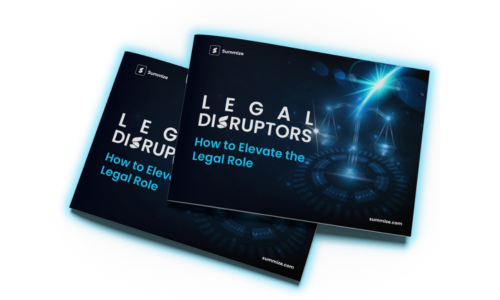Contract generation: The process, meaning and benefits
Contract Generation is the process of gathering and preparing all relevant data and creating an accurate and legally binding contract.
May 17, 2023
November 25, 2025
Contracts sit at the heart of a business. They are an essential element in every organization's strategy and growth. But manual contract generation can be a cumbersome and lengthy process, creating delays and impacting sales cycles, halting that all-important revenue growth.
Fortunately, businesses can avoid these pitfalls and seamlessly generate new contracts by leveraging contract generation software.
What is contract generation?
Contract generation creates a new legally binding agreement between two or more parties.
It involves drafting and populating a new contract that outlines the terms and conditions of the agreement before sending it to the involved parties for the negotiation stage. The process begins during the contract request stage of the contract lifecycle before moving to contract authoring.
Contracts can be generated manually or using software such as a contract lifecycle management (CLM) tool. Manual contract generation is often repetitive, making it an ideal part of the contract lifecycle to automate. That’s why contract generation software is one of the legal teams' most commonly sought-after solutions.
What are the stages of contract generation?
The contract generation process will vary depending on the type of organization and their goals for the agreement, but the process typically follows these simple steps:
1. Creating templates
The first stage of the contract generation process is the creation of contract templates.
Legal teams usually have a library of pre-approved templates, enabling the creation of standard contracts at scale. These pre-approved templates allow commercial users to self-serve on contract creation, bypassing potential bottlenecks and delays. They can be centrally stored, allowing commercial users to access them and easily standardize the contract generation process.
Contract generation software like Summize also helps legal teams retain complete control over this library of templates and approved legal content, making them accessible via smart workflows for commercial users. Their usage can also be tracked using the interactive analytics dashboard.
2. Populating the information
The second stage of the process occurs when commercial teams create their contracts using the pre-approved templates. The user will then populate the relevant template with the appropriate information.
However, the population of this data can be automated using software like Summize, which helps users build contracts from a library of master templates via integrations in tools such as Outlook, Gmail, Microsoft Team and Slack, in as little as two minutes.
Sales teams can also utilize the Summize Salesforce and HubSpot integrations, which populates their contracts with the relevant deal information at the click of a button.
3. Approving the contract
Once a user has populated the contract with the relevant information, it can be sent to the appropriate stakeholders for approval.
Summize streamlines this process by controlling creation during the authoring stage and allowing legal full control over contract generation. The chatbot guides users through contracting processes in plain English, building contracts quickly and simply, without incurring risk.
Benefits of using contract generation software
1. Time-savings
Generating contracts manually can be time-consuming, especially when the workflow sits with legal, who are already overloaded with other time-consuming tasks.
"With Summize, we've significantly cut down contract creation time, making it three times quicker than before." Lynette Mapp, Head of Legal at Asset Reality.
However, by utilizing contract generation software, commercial users can access a range of pre-approved legal templates, allowing them to self-serve instead of waiting for legal to fulfil the request. By bypassing this bottleneck, commercial users can accelerate their contract lifecycle and path to revenue.
2. Improved compliance
Manual contracting processes are prone to human error. So, using contract generation software like Summize ensures that all created contracts are fully compliant, consistent, and avoid these costly mistakes.
Summize’s contextual Q&A chatbot provides real-time responses, building a legal contract instantly from the pre-approved template library and reducing the involvement of legal in standard, low-value contractual projects.
3. Enhanced efficiency
As a business grows, so does the volume and complexity of its contracts. Found in our Legal Disrupters Report, 81% of in-house legal professionals stated that basic tasks such as contract reviews dominate their daily workload, leaving no time for high-value strategic work.
Contract generation software automates the process, allowing legal and commercial users to create more contracts quickly at scale. It leaves your sales team with more time to grow their pipeline and close more deals, and your legal team to focus on strategic work.
Best contract generation software features
1. Integrations
Integrations are becoming increasingly important to all businesses – no one wants to have to replace their whole tech stack every time they purchase a new tool. That’s why Summize integrates its contracting processes into your existing tools and workflows such as Outlook, HubSpot, Microsoft Teams, Jira, Gmail, Slack and Word as the primary user interface. This allows users to continue working with the tools they already know and love, ensuring maximum user adoption across the business.
2. Versioning & auditing
Contracts often go through multiple iterations before being finalized, making it challenging to keep up with the latest version. Summize allows users to amend draft contracts before approval and add new versions to negotiation cycles.
3. Full audit trail
Contracts have multiple stakeholders across the business, and when generating a new contract, it’s critical to know who has done what and where. Summize provides a full detailed audit trail of the pre-signature history of the key actions and events for a given request.
4. Collaboration
Contract generation software should include collaboration features that allow multiple stakeholders to work together seamlessly. Summize encourages this within the app and its integrations – users can start conversations, receive alerts, and track updates using the interactive dashboard.
"Sales can now work directly within Word and Slack for their NDA and contract needs. Our legal team sets the workflows, and Summize takes care of the rest. This allows us to focus on more strategic initiatives." Kimberly Trull, Head of Legal at Matillion.
5. Smart workflows
Smart, automated workflows allow legal teams to retain full control and commercial users to self-serve using conditional logic rules. This means that any contract that commercial users generate is fully legal and compliant.
See the software in action
With the right technology, contracting processes can be integrated into organizations existing workflows and tech stack to maximize user adoption. Summize offers all the features above and more for contract generation. To learn more about the integrated CLM experience, book a demo today.
Discover even more!
Explore more about contracting and CLM in our ultimate contract guides








